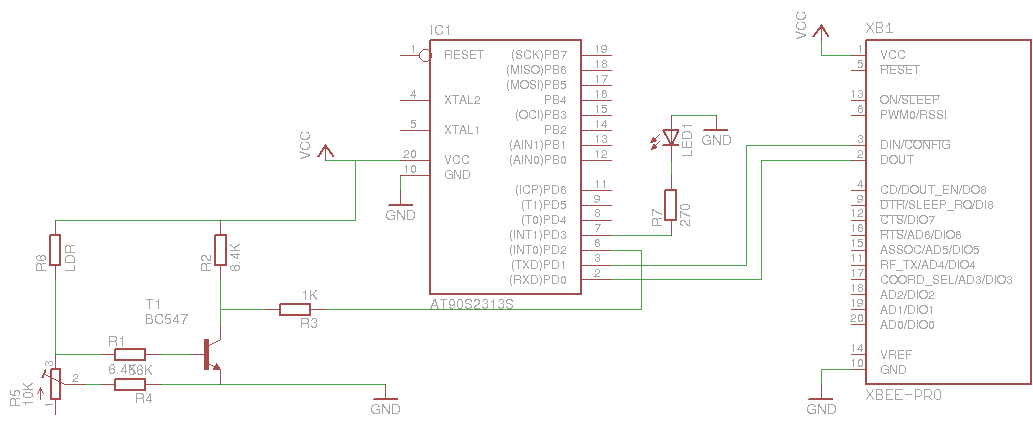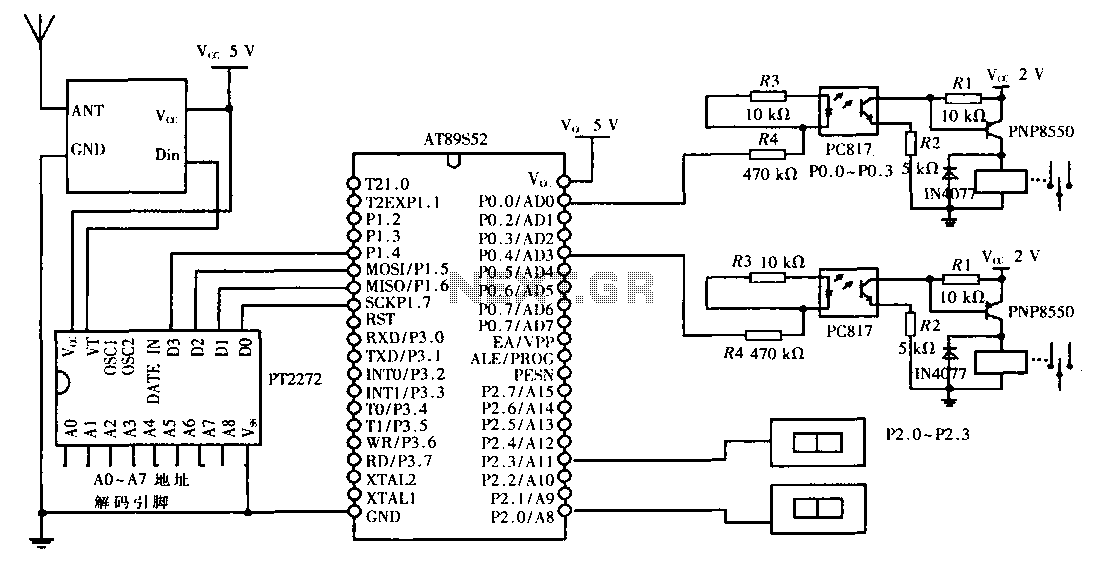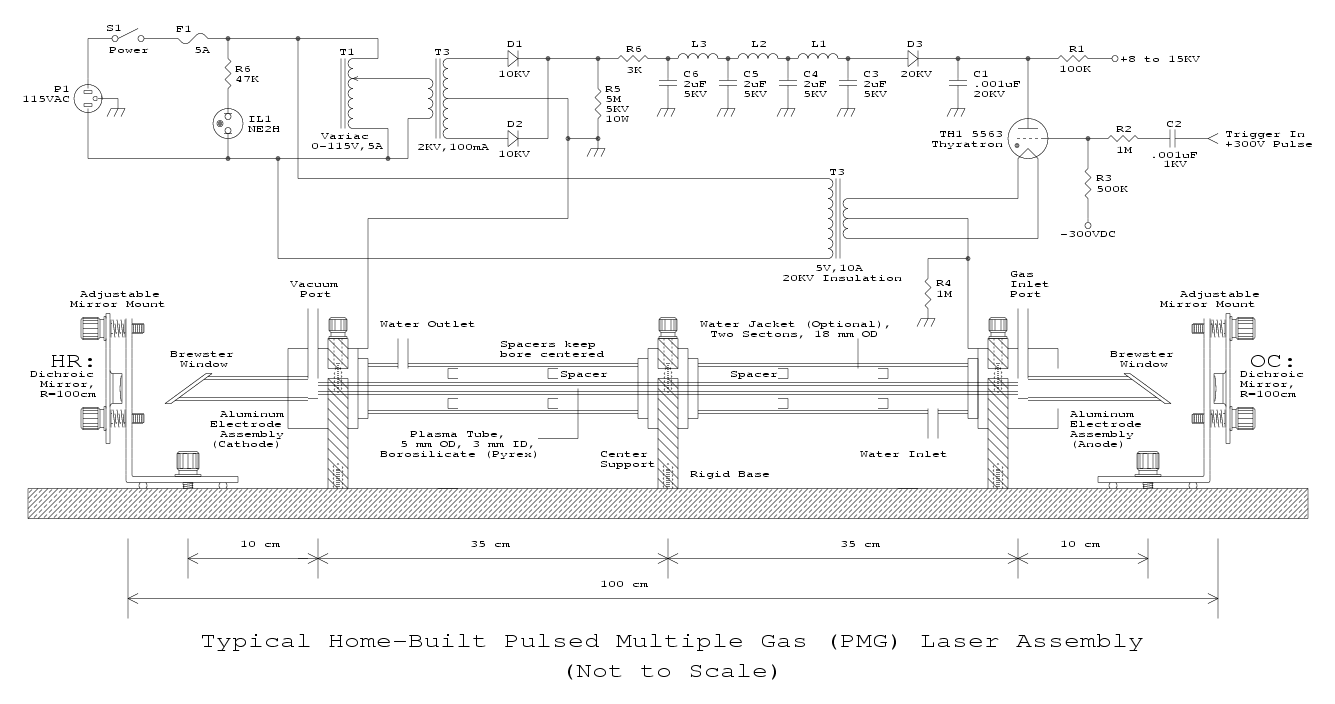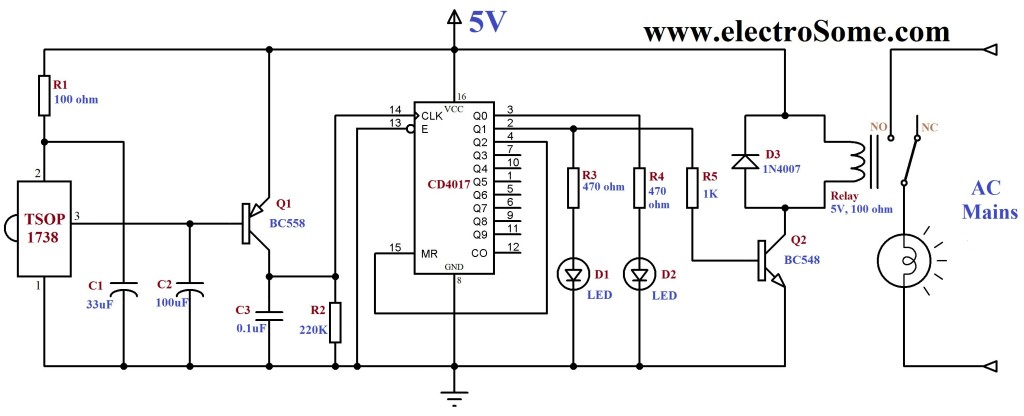
monitoring electricity usage at home

Gather statistics about electricity usage in a new house, specifically to determine how much using the fireplace reduces the bill. The utility company has installed a meter that features a blinking LED, with the text indicating that 480 blinks correspond to 1 kWh used. The intention is to build a device that counts these blinks. A photoresistor is affixed to the LED using blu-tack, ensuring that the measuring circuit is isolated from the mains without tampering with the meter. Although the LED is not very bright, the circuit is sensitive to ambient light but operates reliably when the cabinet enclosing the meter is closed. Currently, XBee is used for communication with the server that collects the measurements. The meter is located in the utility room, which is too far for cable installation. A compatible WLAN transmitter has been purchased to eventually replace the XBee. In the circuit, the analog section on the left converts the photoresistor value (R3) into a digital signal read by the ATtiny2313. The sensitivity of the photoresistor is adjusted using variable resistor R5. The AVR responds to two commands in the current code: "LUKU" (COUNT) and "VALI" (INTERVAL). The COUNT command returns the number of blinks since the last count command, allowing for the calculation of electricity usage based on the number of blinks and the time taken to count them. The INTERVAL command returns the time between the last two blinks, enabling the calculation of current consumption. A picture of the setup is not available, as the current configuration uses circuit boards from previous projects—one containing the AVR and the other the XBee, resulting in a messy setup. A custom PCB will be created once the WLAN transmitter is operational. The attached AVR code is somewhat disorganized and currently compiles for the ATmega8, but it could be easily ported to an Arduino if necessary. The server consists of two scripts: measurer.py, which runs continuously, queries the device every five minutes, and logs consumption to an SQLite database along with temperature data parsed from a local university's webpage. This script also provides a Unix socket for the second script to query current consumption and temperature. The second script, show_graph.py, is intended for use by a web server, returning a graph of usage and temperature as a PNG image. CGI parameters (to, from, interval) can be used to obtain graphs for specific time periods, with the interval parameter defining the time in minutes over which measurements are averaged. Averaging measurements over at least an hour during winter is beneficial, as shorter periods can show significant consumption variability based on the number of heaters in operation, complicating analysis and comparisons.
The described circuit is designed to monitor electricity consumption by counting the blinks of an LED on a utility meter, which indicates energy usage. The primary components include a photoresistor (R3) that detects the LED's blinking, an ATtiny2313 microcontroller that processes the input signal, and a variable resistor (R5) that adjusts the sensitivity of the photoresistor. The microcontroller is programmed to interpret two commands: one for counting the blinks to calculate energy consumption and another for measuring the time interval between blinks to estimate current consumption.
The communication between the device and the server is facilitated by an XBee module, which transmits the data wirelessly to avoid the need for physical cabling. This setup is particularly useful given the meter's location in a utility room that is not easily accessible. Future plans involve replacing the XBee with a WLAN transmitter, which will allow for a more streamlined and efficient design.
The server-side implementation consists of two Python scripts. The first script, measurer.py, is responsible for periodic data collection and logging. It queries the device at five-minute intervals and records the electricity consumption alongside temperature data from an external source. This data is stored in an SQLite database for further analysis. The second script, show_graph.py, generates visual representations of the collected data, allowing users to analyze trends in electricity usage and temperature over specified time periods.
Overall, this project integrates both hardware and software components to create a comprehensive system for monitoring and analyzing electricity consumption in a residential setting, with an emphasis on understanding the impact of specific appliances, such as a fireplace, on overall energy usage.Gather statistic about the electricity usage at my new house, mainly to see how much using the fireplace lowers the bill. The meter installed by the utility company has a led that blinks at the speed that is relative to the usage.
Text on the meter says that 480 blinks equals 1 kWh used. I thought that building a device that keeps count of these blinks should be easy enough to make. I used photoresistor attachedv on top of the led with blu-tack. This way the measuring circuit is isolated from the mains and the setup doesn`t require tampering with the meter. The led on the meter is not very bright, so the circuit is quite sensitive to ambient light, but works reliably when the cabinet enclosing the meter is kept closed.
Currently I`m using XBee to communicate with the server which gathers the measurements. The meter itself is at the utility room, which is too far to run cables to. I`ve already bought XBee pinout compatible wlan transmitter to get rid of the XBee eventually. In the circuit, analog part on the left turns value of photoresistor (R3) to digital signal read by ATtiny2313. Sensitivity of the photoresistor is changed with the variable resistor R5. The avr responds to two commands (in current code "LUKU" and "VALI" translation would be "COUNT" and "INTERVAL").
Count simply returns number of blinks since the last count command. When read periodically, electricity usage can be calculated from the number of blinks and the time used to count them. Second command returns the time between two last blinks, so current consumption can be calculated from that.
I`d like to show the picture of the setup, but currently I`m using circuit boards from the past projects, one has the avr and the other contains the XBee, so the setup is quite messy. I`ll create custom PCB as soon as I get the wlan transmitter working. The attached AVR code is also quite messy and currently compiles to ATmega8. It could be easily ported to ex. Arduino if needed. The server part consists of two scripts. Measurer. py runs constantly and queries the device every 5 minutes and records the consumption to sqlite database together with temperature, which is parsed from the web page provided by local university.
It also provides unix socket for the second script to query current consumption and temperature. The second script, show_graph. py is meant to be run by web server. It returns graph about the usage and the temperature as png picture. Cgi parameters (to, from, interval) can be used to get graph about specific time period. Interval is used to set time in minutes for how long period of measurements are averaged. I`ve found it useful in winter time to average measurements for at least an hour, because on shorter periods consumption varies greatly based on how many heaters are running at the time. The variance makes it hard to understand what is going on and to compare the usage. 🔗 External reference
The described circuit is designed to monitor electricity consumption by counting the blinks of an LED on a utility meter, which indicates energy usage. The primary components include a photoresistor (R3) that detects the LED's blinking, an ATtiny2313 microcontroller that processes the input signal, and a variable resistor (R5) that adjusts the sensitivity of the photoresistor. The microcontroller is programmed to interpret two commands: one for counting the blinks to calculate energy consumption and another for measuring the time interval between blinks to estimate current consumption.
The communication between the device and the server is facilitated by an XBee module, which transmits the data wirelessly to avoid the need for physical cabling. This setup is particularly useful given the meter's location in a utility room that is not easily accessible. Future plans involve replacing the XBee with a WLAN transmitter, which will allow for a more streamlined and efficient design.
The server-side implementation consists of two Python scripts. The first script, measurer.py, is responsible for periodic data collection and logging. It queries the device at five-minute intervals and records the electricity consumption alongside temperature data from an external source. This data is stored in an SQLite database for further analysis. The second script, show_graph.py, generates visual representations of the collected data, allowing users to analyze trends in electricity usage and temperature over specified time periods.
Overall, this project integrates both hardware and software components to create a comprehensive system for monitoring and analyzing electricity consumption in a residential setting, with an emphasis on understanding the impact of specific appliances, such as a fireplace, on overall energy usage.Gather statistic about the electricity usage at my new house, mainly to see how much using the fireplace lowers the bill. The meter installed by the utility company has a led that blinks at the speed that is relative to the usage.
Text on the meter says that 480 blinks equals 1 kWh used. I thought that building a device that keeps count of these blinks should be easy enough to make. I used photoresistor attachedv on top of the led with blu-tack. This way the measuring circuit is isolated from the mains and the setup doesn`t require tampering with the meter. The led on the meter is not very bright, so the circuit is quite sensitive to ambient light, but works reliably when the cabinet enclosing the meter is kept closed.
Currently I`m using XBee to communicate with the server which gathers the measurements. The meter itself is at the utility room, which is too far to run cables to. I`ve already bought XBee pinout compatible wlan transmitter to get rid of the XBee eventually. In the circuit, analog part on the left turns value of photoresistor (R3) to digital signal read by ATtiny2313. Sensitivity of the photoresistor is changed with the variable resistor R5. The avr responds to two commands (in current code "LUKU" and "VALI" translation would be "COUNT" and "INTERVAL").
Count simply returns number of blinks since the last count command. When read periodically, electricity usage can be calculated from the number of blinks and the time used to count them. Second command returns the time between two last blinks, so current consumption can be calculated from that.
I`d like to show the picture of the setup, but currently I`m using circuit boards from the past projects, one has the avr and the other contains the XBee, so the setup is quite messy. I`ll create custom PCB as soon as I get the wlan transmitter working. The attached AVR code is also quite messy and currently compiles to ATmega8. It could be easily ported to ex. Arduino if needed. The server part consists of two scripts. Measurer. py runs constantly and queries the device every 5 minutes and records the consumption to sqlite database together with temperature, which is parsed from the web page provided by local university.
It also provides unix socket for the second script to query current consumption and temperature. The second script, show_graph. py is meant to be run by web server. It returns graph about the usage and the temperature as png picture. Cgi parameters (to, from, interval) can be used to get graph about specific time period. Interval is used to set time in minutes for how long period of measurements are averaged. I`ve found it useful in winter time to average measurements for at least an hour, because on shorter periods consumption varies greatly based on how many heaters are running at the time. The variance makes it hard to understand what is going on and to compare the usage. 🔗 External reference





.jpg)